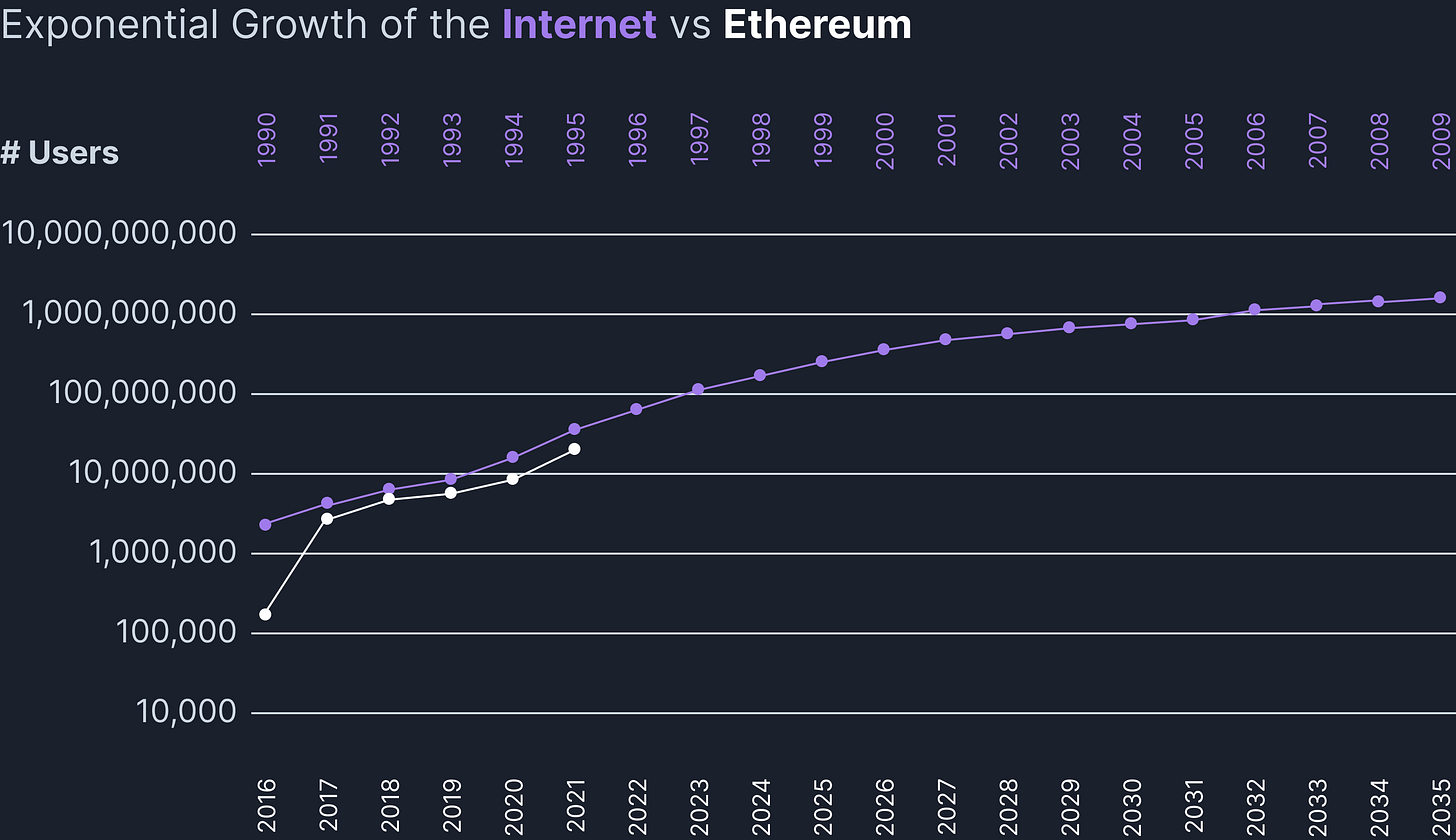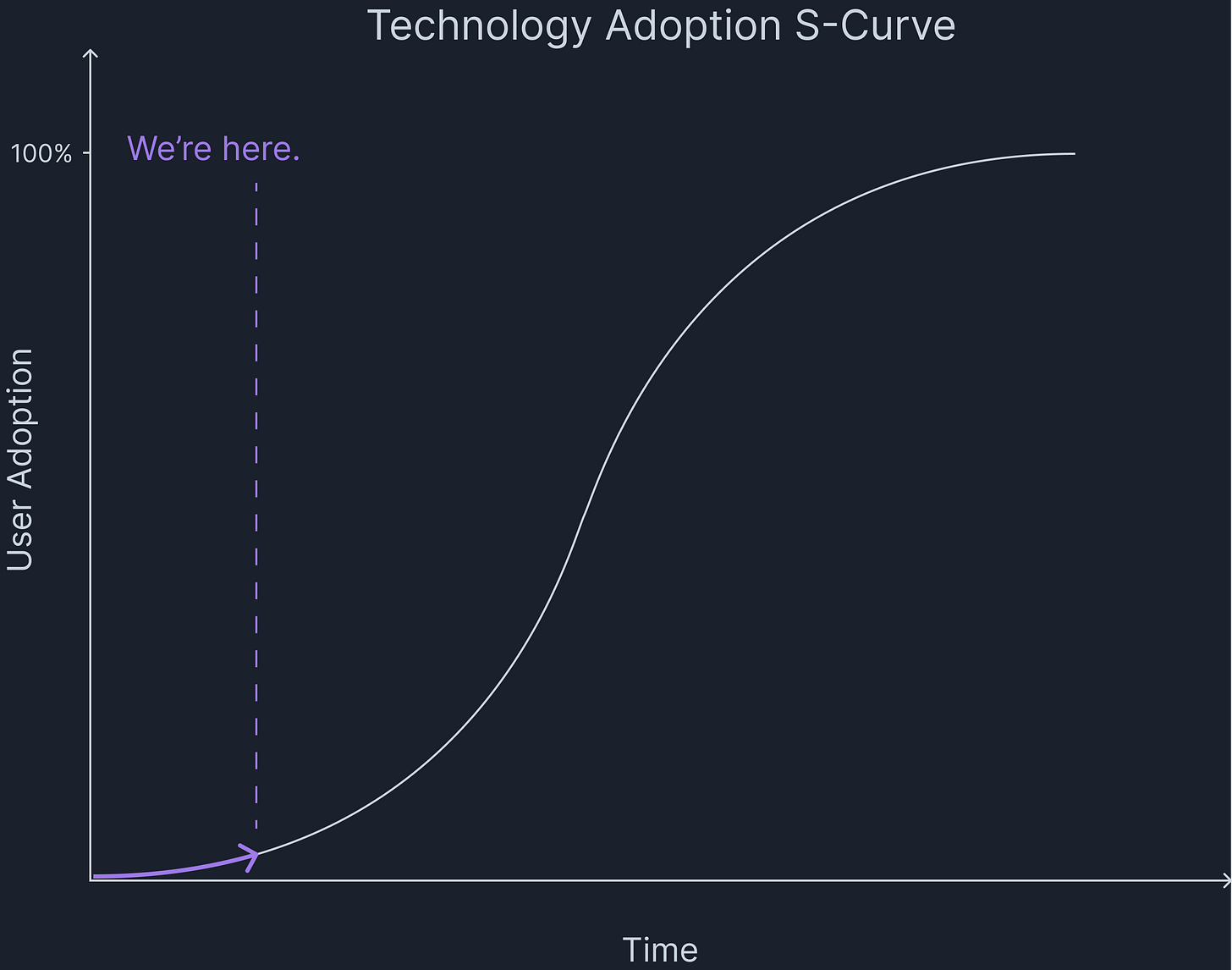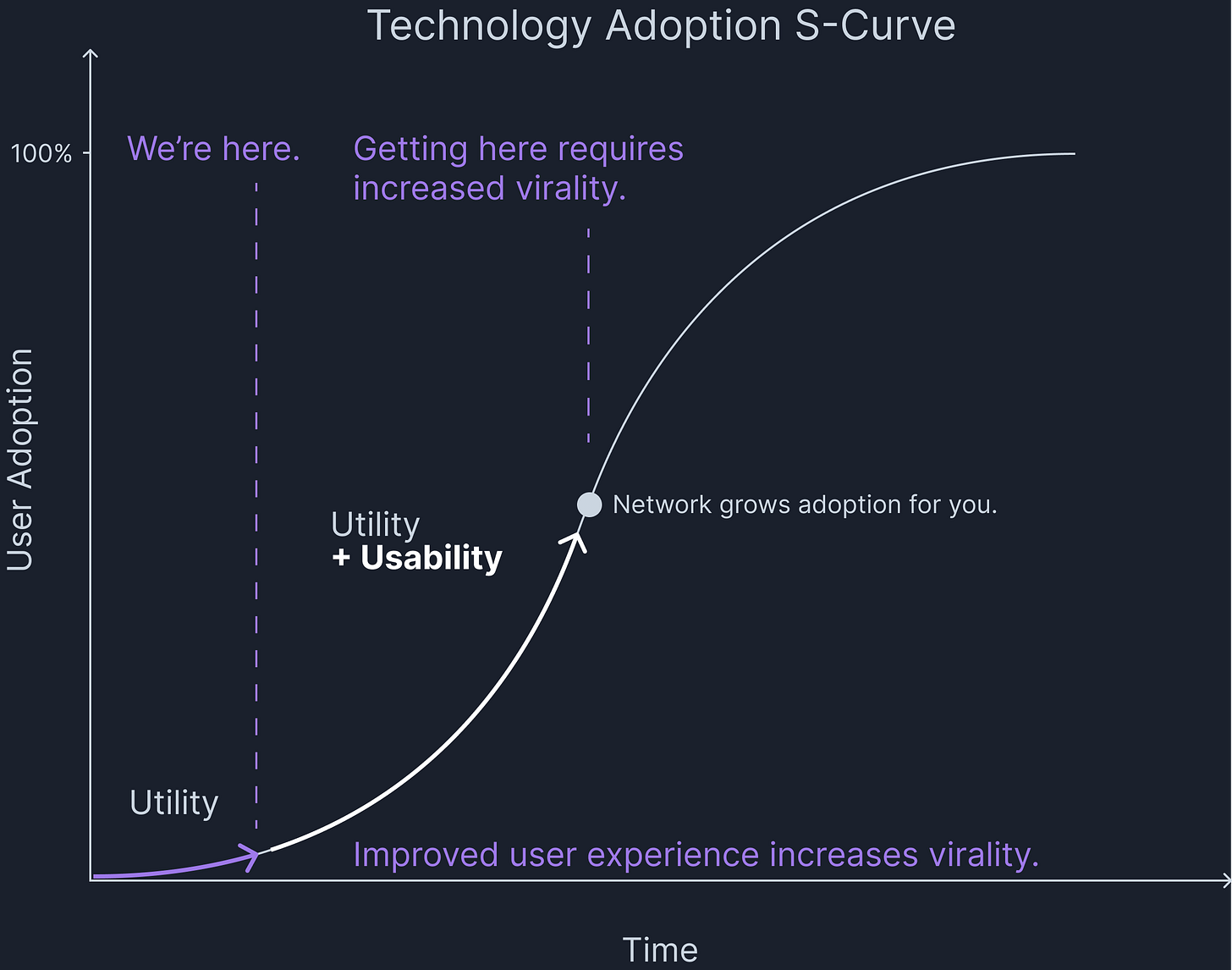Increased Resolve for Web3 Usability Will Unleash Further Exponential Growth for the Industry
Web3 technologies are set out to reorder how people, organizations, and societies organize themselves. It seems that everything is a candidate for revolutionary redesign - trust, money, financial services, business organization, identity, law, cities and nation states… Why not user experience design?
The ambition is commendable and the bravery with which several players in the space are charging forward on their pieces of the puzzle is no less inspiring than any innovators and change agents of previous technologies that transformed the world. While ambition and bravery are admirable, it doesn’t always win the prize.
A famous example here is when a reporter asked Jeff Bezos, "what do you think is going to change most in the next 10 years?" His response: "That's a good question. But a better question is: What's not going to change in the next 10-20 years?" Amazon was born and has grown always knowing - not assuming - what the job to be done for their customers has been. They’ve never deviated.
Web3’s Parallel Growth Period Today With Web 2.0 in the Mid-90’s
Based the World Bank, Coin Metrics, and a16z’s analysis of public data on the Ethereum blockchain, this is what is estimated about the number of Ethereum users vs users of the internet.
Ethereum is on its way. Exponential growth of new technologies is not deterministic, however. There were several events in the course of the internet’s growth that unlocked new levels of virality. In the same way, web3 as an industry will need to adopt new strategies to see the same kinds of growth spurts.
One of the most meaningful growth spurts of the internet occurred during the mid-90’s and mid-2000’s when it saw its inflection point from 100 million to 1 billion users. The industry leadership of Jakob Nielsen, Don Norman, and others during that period is one of the main reasons that happened. The success of their design work from the 80’s to 90’s set industry standards through the mid-2000’s (and continue to do so today).
Here is a more productive way to look at where we are with worldwide adoption of web3, in general. There is a clear need to nudge our trajectory upward.
The next most important thing we can do to nudge our industry trajectory upward is to adopt a new mindset toward our users, and a greater resolve for user-centered design.
User-Centered Design Remains Non-negotiable
By the looks of web3 adoption today, similar to how it looked in the early days of the internet, users want web products to work like other things they’re familiar with. And engineers aren’t providing enough of them. This has always been the case with new technologies.
You could say user-centered design is the first thing not up for redefinition. “The most important equation in any startup” is the viral coefficient. This is how you calculate virality of one product.
Here’s a simplified version:
What does the virality of Ethereum-based products look like today?
Here’s a breakdown given by ENS Cofounder, Alex Van De Sande, of how overwhelmingly prohibitive web3 is to the average individual (who our industry vision depends on adopting). He calculated virality for Ethereum-based dapps differently than the standard viral coefficient formula above, given the interdependency of several DLT information sources and products for any given Ethereum-based product.
He points out that the only way for the Ethereum ecosystem to work is for things to look like this:
Will one adopted user turn into more than one user? Specifically - will the average adopted user of anything in the space turn into more than 1 additional user adopting it or anything else in the space? For average people, clearly the answer today is no. This is how he visualized the user onboarding of any Ethereum-based product:
There is clearly industry-wide complexity that is prohibitive to the average person. The problems we’re solving right now, though, are beyond user interface. We have to factor usability into the implementation details of our protocols and systems. “Bad onboarding means Ethereum apps, outside of tech enthusiasts, have a viral factor of 0.0.” It’s not just bad. It’s “user-hostile”.
We can’t keep building in isolation of our users. We have no choice but to better understand them, and actually gain empathy for them. Boiling it down to “common sense” is simplistic. It starts with understanding the human factors that dictate user experience design, and then building a user-centered culture and design process within our web3 ventures.











